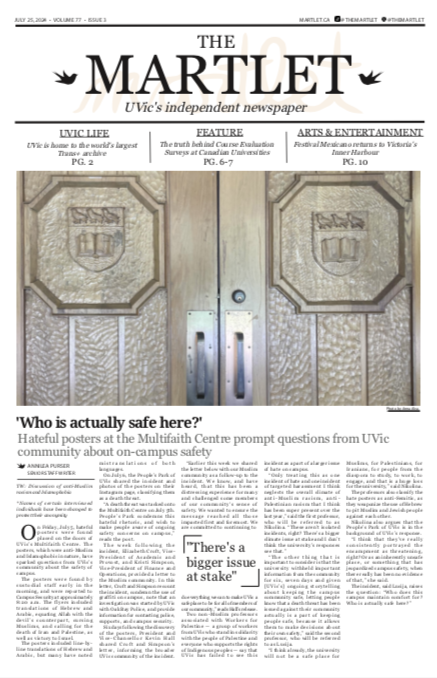Provincial governments should step up to help students

File Graphic by Annie LePage, Graphics Contributor
Does a valuable education have to come at the expense of students’ wallets? UVic’s budget strategy suggests that the answer is yes.
At a time when a post-secondary education is becoming increasingly essential in the job market, tuition fees have been a hot topic. Compared to the United States, where a top-level school could cost tens of thousands of dollars a year, Canadian schools may seem relatively affordable, with domestic undergraduate tuition costing an average of $6 571 per year range. But this is not true for international students.
While tuition increases for domestic students are regulated (in B.C., domestic tuition increases are capped at two per cent per year), international tuition is not, and universities are relying more and more on much higher fees from international students to cover operating costs.
At UVic, undergraduate international students currently pay more than three times as much as equivalent domestic students: an estimated $18 062 versus $5 475 per year.
Unfortunately, this is not uncommon. According to a 2017 CBC article, the average international undergraduate tuition in Ontario was $23 510 per year, and $41 920 at the University of Toronto, while domestic students were reported to pay an average of $6 327. And Statistics Canada reported a national average for international undergraduate tuition of $25 180 for the 2017/18 year.
A major reason for this discrepancy is a lack of regulation of international student fees, something UVic students have been working to change. However, while existing international students in many programs have been guaranteed a maximum four per cent per year increase, this is still double the increases that domestic students face, and there are still no policies in place to protect new international students, a fact that the university is openly exploiting.
International student fees for incoming undergraduate students are proposed to increase by 20 per cent for the 2018/19 academic year — an increase which would earn nearly three million dollars’ worth of the university’s projected 11 million dollar increase in revenue.
This includes a $6.3 million increase in provincial government funding — a source of revenue that is declining in many provinces. Operating funding for Ontario universities has effectively been frozen for the past decade. The Saskatchewan government pulled $44 million in funding from the Ministry of Advanced education last year, reducing both university base funding and student aid. The Manitoba government is also planning to reduce post-secondary funding by 0.9 per cent in the upcoming school year.
It costs money to run a university. The question is, who should foot the bill?
The fact is, even for domestic students, tuition fees can be prohibitively expensive, especially with the skyrocketing rent prices in places like Victoria and Vancouver. B.C. students already have the highest student loan debt in Canada, despite having, on average, lower tuition fees.
International students face the same high cost of living, often with added burdens such as higher travel expenses and less access to employment. Additionally, international students can often be especially vulnerable in the already cutthroat rental market, whether this be through language barriers or less familiarity with B.C. tenancy laws, or simply from having to arrange tenancy remotely.
Like many other students, international students are young people trying to pursue their best futures. Why are they shouldering the operating costs of Canadian universities?
The university is justifying these fee increases as necessary for the quality of education, and to stay in line with comparable universities. But what’s the point of providing a quality education if the price tag is inaccessible?
An undergraduate degree is becoming the new minimum standard for jobs worldwide. Free public education is available at the secondary level across Canada, but university funding is in the hands of the provincial governments, and is, in many cases, lagging. Access to quality education is key to creating the world of tomorrow, and it’s time we started treating it as a right instead of a commodity.
The mark of a good education shouldn’t be its price tag but the skills, knowledge and experience it provides. Lower tuition fees should not be a barrier to a university’s operation, but a point of pride in providing more accessible education.
To create a better future for Canada and for students around the world, our governments should be prioritizing the education people need to improve their communities. Instead of having international students hold up our universities, increase provincial and federal funding so that all students can get the education they deserve — without the burden of tens of thousands of dollars worth of debt. Opening the doors to post-secondary education will open the doors to a better society.






